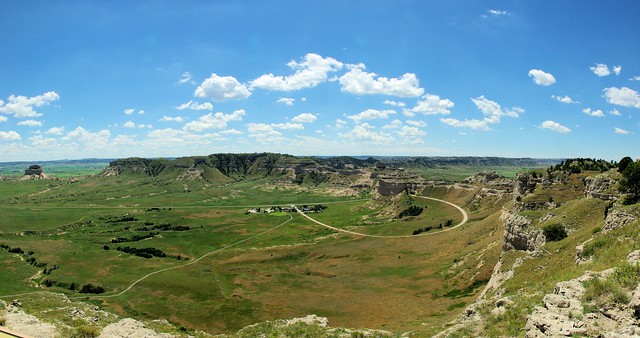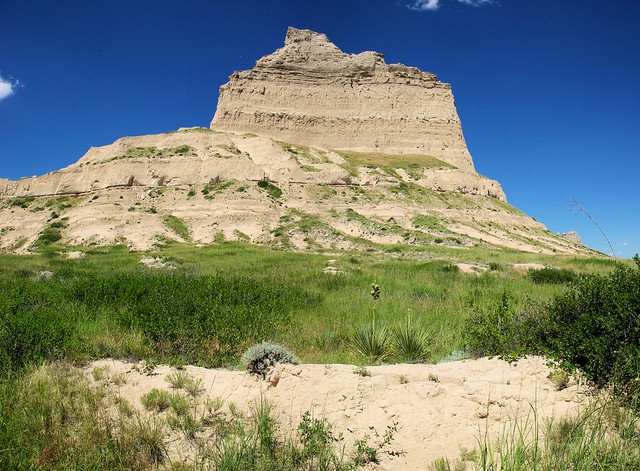One of the places we stopped on our long travel day on July 9, 2010 was Scotts Bluff National Monument, an important landmark along the Oregon and Mormon trails.

Instead of unhooking the car from the motor home, we elected to take the free shuttle that goes to the top.

There is also a trail, Saddle Rock Trail, where visitors can hike 1.6 miles to the top of the bluff. A shorter trail leads to an area where deep cuts in the soil remain from the passage of wagon trains through Mitchell Pass – in the image below, overgrown with vegetation.

From various tribes of Native Americans living and travelling through the area to our modern towns with populations made of many different cultures, Scotts Bluff has served as a landmark for a huge diversity of peoples.
Although earlier people did not leave very much that shows what the bluffs meant to them, evidence shows they did camp at the foot of the bluff. On the other hand, the westward emigrants of the 19th century often mentioned Scotts Bluff in their diaries and journals. In fact, it was the second most referred to landmark on the Oregon, Mormon and California trails after Chimney Rock. Over 250,000 people made their way through the area between 1843 and 1869, often pausing in wonder to see such a natural marvel and many remembered it long after their journeys were over.
As the area became more settled, the idea of protecting the fragile bluffs became popular. Scotts Bluff National Monument was proposed and became reality in 1919. The history of the monument development involved many people and a lot of time.
The preservation of the natural and human history of the Scotts Bluff area is an ongoing process. Many museum items from the Scotts Bluff collection are on permanent display in the visitor center. Others are kept in storage and occasionally rotated to the public area of the visitor center for temporary display. (National Park Service)


Comments on this entry are closed.
Oh man how cool is that! Love those pics of the wagons. It must be so neat to stop and see a relatively untouched part of history. Is the place pretty much left alone or are there a lot of “touristy” things all over the place? Great pictures too!
Like most national parks and monuments, it’s mostly undeveloped.